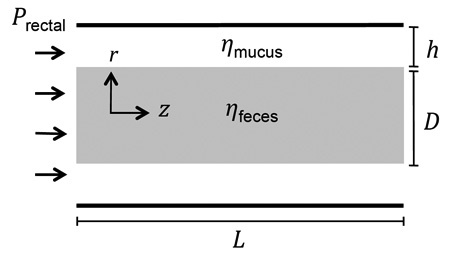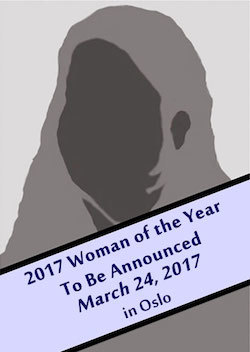Marc Abrahams's Blog, page 222
April 27, 2017
Bungee cord-induced corneal lacerations correcting for myopic astigmatism
Although bungee jumping has been proved to be responsible for a wide range of medical problems (see previous article) it should not be assumed that use (or misuse) of bungee cords cannot ever have positive medical outcomes. A case is presented in the Journal of Cataract & Refractive Surgery which describes a patient who had his spectacles shattered by the catapulting metal end of a bungee cord – resulting in corneal lacerations from the broken glass. However, after recovery from the injury, there was a surprising outcome – the corneal laceration had produced a Radial-Keratotomy–like effect, resulting in much improved visual acuity in the damaged eye.
“The corneal lacerations appeared to induce a relaxing effect on the central cornea, thereby flattening it and improving the myopia; more severe outcomes such as globe perforation and infection were fortunately avoided. Our case not only describes one of the ocular injures related to a bungee cord, but also illustrates a surprising and un-recognized sequela of corneal trauma – myopic correction.”
Details are provided in Bungee cord-induced corneal lacerations correcting for myopic astigmatism, Journal of Cataract & Refractive Surgery Volume 33, Issue 7, July 2007, Pages 1339–1340
Advisory : Don’t try this at home, or away from home, or anywhere else.
BONUS : Eye trauma in Laurel and Hardy movies – another nice mess

April 25, 2017
Surprising end-results from prize-winning urination-duration researchers
A new study called “Hydrodynamics of Defecation,” published in the research journal Soft Matter, emerges from the same laboratory at Georgia Tech that produced the Ig Nobel Prize-winning study “Duration of Urination Does Not Change With Body Size.” The earlier, urination study was published in the Proceedings of the National Academy of Sciences.
Co-authors Patricia Yang and David Hu shared the Ig Nobel Prize for biology, in the year 2015, as did their urination co-authors Jonathan Pham and Jerome Choo. In the new, defecation study, Yang and Hu are joined in co-authorship by Morgan LaMarca, Candice Kaminski, and Daniel I Chu.
Here’s detail from the new study:
The above three-part illustration shows:
(A) The relationship between body mass M and the mass flow rates of food intake and excreted feces. Symbols represent experimental measurements, and dashed lines represent best fits to the data. (B) Schematic of the flow rate of energy in mammals. (C) Pie chart of the distribution of energy intake.
The authors introduce the underlying mathematics of their work with another simple illustration. They explain:

We present a mathematical model for defecation. Our system consists of a pipe whose length consists of the rectum and the colon, illustrated [here]. We model cylindrical feces of diameter D and total length L, consisting of several pieces joined like sausages. The walls of the cylinder are coated with a mucus layer of thickness h, which is considerably less than D. We parameterize the motion of feces and mucus using cylindrical coordinates… in which z represents the horizontal direction along the cylinder and r the radial direction from the center of the feces to the walls.
The paper reduces the entire flow of its argument into this dense nugget:
Animals discharge feces within a range of sizes and shapes. Such variation has long been used to track animals as well as to diagnose illnesses in both humans and animals. However, the physics by which feces are discharged remain poorly understood. In this combined experimental and theoretical study, we investigate the defecation of mammals from cats to elephants using the dimensions of large intestines and feces, videography at Zoo Atlanta, cone-on-plate rheological measurements of feces and mucus, and a mathematical model of defecation. The diameter of feces is comparable to that of the rectum, but the length is double that of the rectum, indicating that not only the rectum but also the colon is a storage facility for feces. Despite the length of rectum ranging from 4 to 40 cm, mammals from cats to elephants defecate within a nearly constant duration of 12 ± 7 seconds.
The Ig Nobel Prize citation for the earlier, urination study, explains that that earlier study tested “the biological principle that nearly all mammals empty their bladders in about 21 seconds (plus or minus 13 seconds).” The results of the new study, combined with the results of the new study, provide an enriched understanding of how mammalian output functions relate to time.

Highlights from the spring Ig Nobel EuroTour
Here are highlight reels from the recent Ig Nobel shows at the University of Graz and at the University of Stockholm:
Those shows were part of this year’s Ig Nobel Spring Eurotour. This was the full tour schedule:
— NOTTINGHAM TRENT UNIVERSITY, England
— IMPERIAL COLLEGE LONDON, England
— EPFL, Lausanne, Switzerland
— UNIVERSITY OF OSLO, Norway
— STOCKHOLM UNIVERSITY, Stockholm, Sweden
— KAROLINSKA INSTITUTE, Stockholm, Sweden
— FRI TANKE FÖRLAG, Stockholm, Sweden
— ORF (television debate), Vienna, Austria
— UNIVERSITY OF GRAZ, Austria
— UNIVERSITY OF CATANIA, Italy
— NATUURHISTORISCH MUSEUM ROTTERDAM, The Netherlands
— EDINBURGH, Scotland
The shows featured MARC ABRAHAMS (founder of the Ig Nobel Prize ceremony) and different combinations of these Ig Nobel Prize winners:
MINNA LYONS (psychopaths and night owls)
KADER ALLOUNI (using speed bumps to diagnose appendicitis)
ELIZABETH OBERZAUCHER (mathematical analysis of the man who fathered 888 children)
RAGHAVENDRA RAU (some business leaders acquire a taste for disasters that do not affect them personally)
THOMAS THWAITES (living as a goat)
LUDWIG HUBER (absence of contagious yawning in tortoises)
ALESSANDRO PLUCHINO, ANDREA RAPISARDA, CESARE GAROFALO (organizations would become more efficient if they promoted people at random)
HYNEK BURDA (defecating dogs align their body axis with Earth’s north-south geomagnetic field lines)
KEES MOELIKER (homosexual necrophilia in the mallard duck)
PIERS BARNES (how many group photos are needed to ensure at least one in which nobody blinks)
FREDRIK SJÖBERG (three-volume autobiographical work about the pleasures of collecting flies that are dead, and flies that are not yet dead)
LAURENT BÈGUE (people who think they are drunk also think they are attractive)
 HAIR NOTE: The show at the University of Oslo, on Friday, March 24, included the public introduction of the Luxuriant Flowing Hair Club for Scientists (LFHCfS) Woman of the Year: Anneleen Kool.
HAIR NOTE: The show at the University of Oslo, on Friday, March 24, included the public introduction of the Luxuriant Flowing Hair Club for Scientists (LFHCfS) Woman of the Year: Anneleen Kool.
INCOMPETENCE NOTE: The tour also featured tributes to the Ig Nobel Prize-winning (in the year 2000) study of the Dunning-Kruger effect. That study is called “Unskilled and Unaware of It: How Difficulties in Recognizing One’s Own Incompetence Lead to Inflated Self-Assessments.”

April 24, 2017
Immune system suppression from bungee jumping (study)
Of all the possible pitfalls* which can affect bungee jumpers, a compromised immune system might not be the first to spring to mind. But spring it did to the minds of David J van Westerloo, Goda Choi, Ester C Löwenberg, Jasper Truijen, Alex F de Vos, Erik Endert, Joost C M Meijers, Lu Zhou, Manuel PFL Pereira, Karla CS Queiroz, Sander H Diks, Marcel Levi, Maikel P Peppelenbosch, and Tom van der Poll, who have collectively examined, by experiment, the effects that a jump might have.
20 volunteers (naive to bungee jumping) were exposed to a bungee jump from an altitude of 60m, at the foundation teaching hospital Onze Lieve Vrouwe Gasthuis, Amsterdam, The Netherlands.
“The study site was located at the hospital grounds, where a crane was placed. Bungee jumps took place from an altitude of 60 m, under supervision and guidance from an experienced commercial bungee jump crew. On the morning of the study day, an intravenous access catheter was placed in the cubital vein.“
Half had been previously treated with a three day course of propranolol (a beta blocker) and the control group were not. Subsequent blood analyses showed that :
“Plasma catecholamine and cortisol levels increased significantly during jumping, which was accompanied by significantly reduced ex vivo inducibility of proinflammatory cytokines as well as activation of coagulation and vascular endothelium. Kinome profiles obtained from the peripheral blood leukocyte fraction contained a strong noncanonical glucocorticoid receptor signal transduction signature after jumping. In apparent agreement, jumping down regulated Lck/Fyn and cellular innate immune effector function (phagocytosis). Pretreatment of volunteers with propranolol abolished the effects of jumping on coagulation and endothelial activation but left the inhibitory effects on innate immune function intact. Taken together, these results indicate that bungee jumping leads to a catecholamine-independent immune suppressive phenotype and implicate noncanonical glucocorticoid receptor signal transduction as a major pathway linking human stress to impaired functioning of the human innate immune system.”
see: ‘Acute Stress Elicited by Bungee Jumping Suppresses Human Innate Immunity’ in Molecular Medicine, December 2010.
Note that the volunteers actually did the jumps, but many showed obvious signs of stress before jumping. Therefore further studies might be needed to determine whether the immune system effects were caused by mental strain or by the physical stresses of the jump (or both).
* The physical pitfalls can include, but are not limited to, carotid artery dissection, pulmonary hemorrhage, head injuries, dislocation of the humerus, etc etc.
Coming Soon : Medical benefits from bungee cord injuries.

April 20, 2017
People’s preferences for complex explanations (new study)
Those who are keen on the principle of Occam’s Razor [“Pluralitas non est ponenda sine necessitate” or “Plurality is not to be posited without necessity” or “Keep it simple”] may be surprised, perhaps even dismayed, by a new research project which hints at its unpopularity.
“[…] we find that people have a preference for complex explanations […]”
– explain Jeffrey C. Zemla, Steven Sloman, Christos Bechlivanidis and David A. Lagnado in a new report for Psychonomic Bulletin & Review (March 2017) entitled : ‘Evaluating everyday explanations’.
The team’s experimental research, using a corpus of diverse explanations from Reddit’s “Explain Like I’m Five” (and other online sources) revealed unexpected findings :
“A guiding principle in explanatory reasoning is that of Occam’s Razor: All things being equal, the simplest hypothesis should be preferred. Thus, we initially predicted a negative correlation between subjective complexity and explanation quality. Surprisingly, we observed a positive correlation, with explanations that were rated as more complex also rated as better explanations (R = .49, p =.03)”
Following on from this, the team have a proposal :
“We propose that this preference for complexity is driven by a desire to identify enough causes to make the effect seem inevitable.”

April 17, 2017
Advertisements for desserts – should they include bite marks?
Those in the business of marketing desserts might be interested in new research from Donya Shabgard at the University of Manitoba, US, who has investigated, possibly for the first time, the influence of an advertisement’s dessert portrayal on consumer perceptions of desirability. Specifically, should advertisements show desserts with a bite taken out of them or not?
In a series of four experiments, participants were asked to rate faux ads which showed desserts either entire, cut, or with a bite taken out [see image]. The bitten dessert fared well, especially amongst those with dieting experience.
“These findings explain that the bitten dessert is percieved [sic] as more real and authentic in comparison to the cut and whole dessert, and, thus, these perceptions of realness resulted in its positive evaluations.”
.The author points out opportunities for further research :
“It would also be interesting to test whether the effect holds for other food products, such as burgers and pizza, or whether it is limited to desserts, or a certain type of dessert.”
See: Would you like a Bite? The Influence of an Advertisement’s Dessert Portrayal on Consumer Perceptions of Desirability by Donya Shabgard.
BONUS task [optional]: With regard to visual advertising media, which food products would you prefer not to see displayed with a bite already taken out?

April 14, 2017
Nicholas H. Wolfinger joins Luxuriant Flowing Hair Club for Social Scientists
Nicholas H. Wolfinger has joined the The Luxuriant Flowing, Former, or Facial Hair Club for Social Scientists™ (LFFFHCfSS), a sibling club of the Luxuriant Flowing Hair Club for Scientists (LFHCfS). He says:
I view my hair in the spirit of Samson of the Old Testament: If I cut my hair, I lose my writing prowess.
Nicholas H. Wolfinger, Ph.D, LFFFHCfSS
Professor, Department of Family and Consumer Studies
Adjunct Professor, Department of Sociology
University of Utah
Salt Lake City, Utah, USA


April 13, 2017
Towards irrational robots
“How the mind really works? It often works irrationally. But, we argue in this paper, a bit of irrationality may supports [sic] survival and cognitive development.”
And furthermore, say authors Syed I. Ahson and Andrzej Buller in their chapter for Human-Computer Systems Interaction, Volume 60 of the series Advances in Intelligent and Soft Computing, irrational robots may go some way towards realistically emulating human beings. There are caveats however :
“Unfortunately, a robot designed to deliberately expose itself to inconveniences and dangers may be hardly welcomed by today’s corporate investors. The same undoubtedly applies to a robot that displays visible signs of indecisiveness. Nonetheless, we argue that such troublesome properties may be an unavoidable price to pay for a robot’s cognitive self-development up to a level beyond that which can be achieved by handcrafting or simulated evolution.”
See: ‘Toward Daydreaming Machines’ (additional material may be found here.)
Note: The team are somewhat dismissive of “speaking mascots” and “human-shaped reception-desk staff”
“Their ‘intelligence’ is nothing but a masquerade designed to impress laymen”

April 10, 2017
Airline Upgrade Guilt – an examination
 Do people with high levels of guilt-proneness tend to have a heightened sensitivity to injustices – what happens if they get an unexpected airline upgrade for example? This question has been examined by professor Anna S. Mattila and professor Lu Zhang of the School of Hospitality Management, The Pennsylvania State University, US along with professor Lydia Hanks at the Dedman School of Hospitality, The Florida State University, Tallahassee, US.
Do people with high levels of guilt-proneness tend to have a heightened sensitivity to injustices – what happens if they get an unexpected airline upgrade for example? This question has been examined by professor Anna S. Mattila and professor Lu Zhang of the School of Hospitality Management, The Pennsylvania State University, US along with professor Lydia Hanks at the Dedman School of Hospitality, The Florida State University, Tallahassee, US.
Their research paper: ‘Existential Guilt and Preferential Treatment : The Case of an Airline Upgrade‘ is published in the Journal of Travel Research, September 2013 vol. 52 no. 5, pp. 591-599
“Using the context of an unexpected airline upgrade, we examined factors that influence an individual’s reaction when they are overrewarded compared to others: guilt-proneness and relationship to the other, underrewarded, individuals. Results demonstrated that for individuals high in guilt-proneness, satisfaction with the upgrade and behavioral intent may be qualified by a feeling of existential guilt when they receive benefits that others do not, particularly if they have a close relationship with those others.”
The findings have important implications for the hospitality, airline, and travel industries, say the authors :
“ … for customers high in guilt-proneness, receiving an expected upgrade may, in fact, have unintended negative results. Managers can use this information to make employees aware of the potential detrimental effects of rewarding or upgrading only one member of a party.”
The photo shows a Singapore Airlines suite : “How close is too close? You’ll never have to know”
[ Declaration of interest. The author of this post declares an interest, in that he has been the recipient of an unexpected airline upgrade. No perceptible increased levels of guilt ensued however, existential or otherwise.]

April 6, 2017
Umpteen reflections on Indefinite Hyperbolic Numerals
With apologies to our readers who might already know, Indefinite Hyperbolic Numerals* (IHNs) are words like zillion, jillion, and umpteen. Or, to be exact :
“Indefinite hyperbolic numerals (IHN) are words that (1) resemble numerals morphologically, and (2) act as numerals morphosyntactically within numeral phrases, yet (3) whose direct numerical referent remains indefinite.”
For an in-depth look at them, turn to the work of Professor Stephen Chrisomalis of Wayne State University, US. His paper : ‘Umpteen reflections on indefinite hyperbolic numerals’ appears in the journal American Speech, 2016 volume 91, number 1: 3-33. In which, as part of his investigation, the author has compiled a new table of what he determines to be the earliest origins of IHNs. For example, both squillion and umpteen are found to have appeared as early as 1878, whereas umptillion only surfaced in 1948.
Also see: A load of vague non-numerical quantifiers
*Note: Some call them ‘Numericals’.

Marc Abrahams's Blog
- Marc Abrahams's profile
- 14 followers





